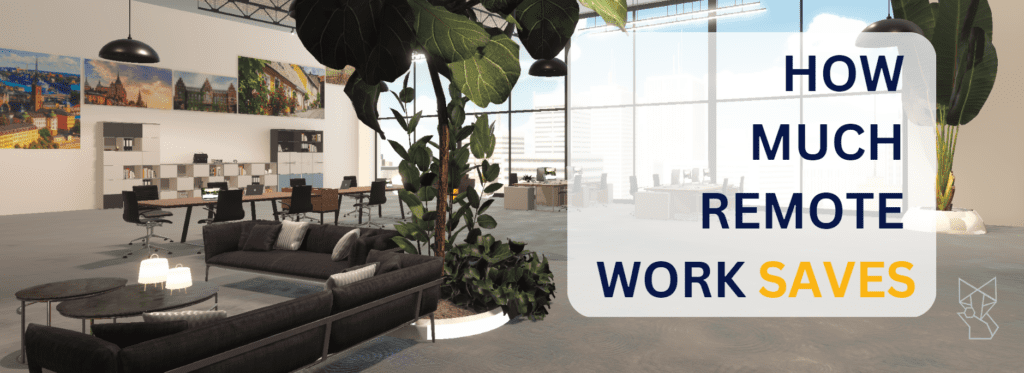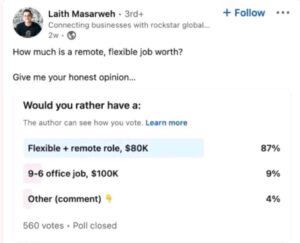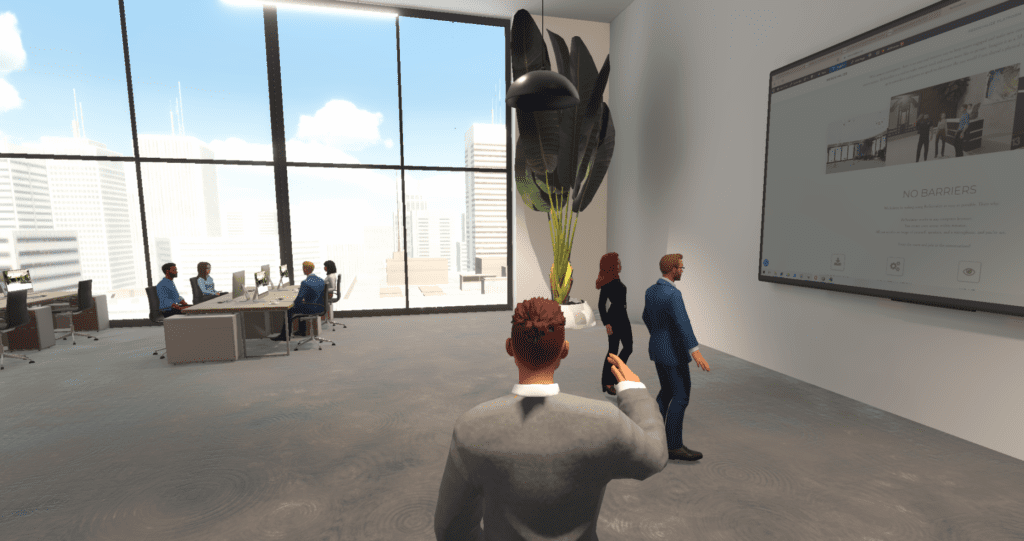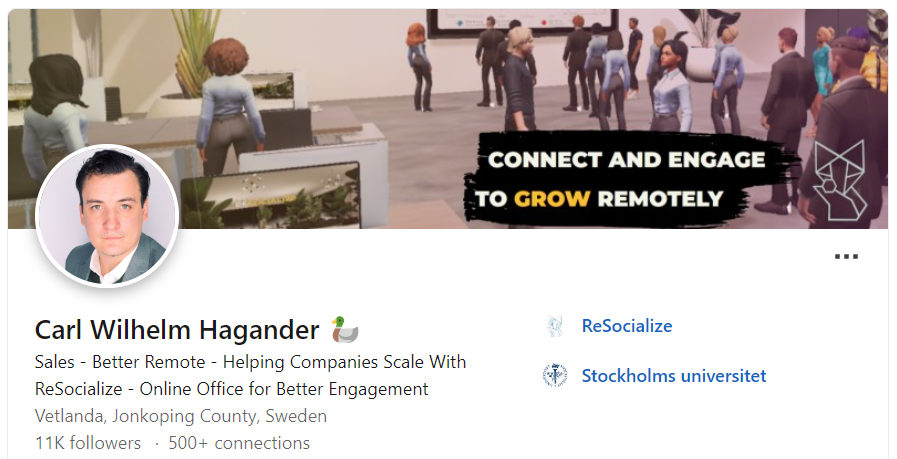
Remote work is changing the professional landscape (and we wrote a guide on how to navigate that change). In this change, remote work offers a huge competitive advantage for young companies who are able to act. How much costs can a company save by building a remote-first culture? This article puts a dollar value on the cost savings of remote work.
Cost Savings Working Remotely
Imagine: You’re looking to change jobs, and you’ve applied to two different companies. Both roles fit your skills, your career aspirations, and your experience. Both companies match your culture, and both are healthy. One offers a salary of $ 100k but requires you to be in the office 9-5 5 days a week. The other offers $ 80k and total flexibility. Which offer do you accept?
Over 80% of respondents, across two separate LinkedIn polls, chose the lower salary.
In the realm of statistical research, getting over 500 respondents is “good enough”. We can be 99% certain that between 81.56% and 92.44% of people would prefer remote work and a 20% lower salary.
Some may have opinions about the exact method used, and that’s a fair point. There are several possible errors in the method – selection bias being a major one. But that’s beside the point. The point isn’t to claim a specific percentage but to represent a majority. A vast majority.
Competitive Advantage for Remote Work

These findings came with one major caveat:
Where work is performed should not define the pay level. Pay for a certain position should be a direct function of the value of the output from that position. Someone working remotely should not be paid less than their in-office colleague. Similar pay for similar work, at similar levels of seniority, generating similar results.
Further, a shift to remote work within the same company should not come with a salary reduction.
It is worth mentioning that a lower salary doesn’t need to mean less available money. For many, working remotely means they can escape expensive living in city centers. Remote work could lead to both a lower salary and lower costs of living. This could increase their disposable income.
Who gets the remote work competitive advantage?
This means the cards are stacked in the small scrappy start-up’s favor. For a large company, this isn’t a smooth process. Shifting from an established salary strategy to one that is 20% lower will prove costly. People will leave, and those who stay will be less motivated to do good work. This leads to negative numbers on the bottom line.

Instead, a small growing organization can adopt these strategies going forward. They can build a remote-first organization from the early days. This gives them 20% lower salary costs without the related drop in morale and production.
In short: smaller, younger, and more nimble organizations have the advantage. Over time, these effects compound. The advantage can pose an existential threat to established industry titans.
Cost Of Having An Office
Then there is the cost of the physical office to consider. In the US, the average office worker needs between 125-175 square feet of office space (that’s roughly 11-16 m2). On average, office space in the US costs $38 per square foot per year. That’s $ 5700 per employee per year. At a prime office location, the average jumps to $89, meaning a yearly cost of $13 350.
Other office-related costs also add up. On average, an employer can save $11 000 per employee, by working remotely half the week. Let’s disregard these costs as they can be hard to quantify.
Costs of Remote Work
Remote work isn’t free either. On average, remote workers see their energy bills increase $50 per month. Companies that offer remote office set-ups also typically offer home-office set up. This cost more than half of remote workers between $100 and $499. Let’s assume $499 is a yearly number (It’s not, and it’s a high estimate). There are remote collaboration tools with license costs associated with them. Most tools would be in place in an office also, but let’s assume a high estimate of $50 per month for remote working tools (ReSocialize is a dedicated remote work tool, and significantly cheaper). This adds up to a yearly cost of $1699 for remote work solutions.

Advantages Of Remote Work
Here it’s worth noting that there are several other advantages of remote work. They include:
- Higher productivity
- Healthier employees
- Lower employee attrition
- Access to larger talent pool
- Improved employer branding
- Increased employee engagement
These are harder to quantify, so they have been left out of all calculations.
Competitive Advantage Of Remote Work
Together, these numbers give the growing start-up even more of an advantage. Using the most office-friendly version of the numbers, we’re comparing the following:
The yearly cost of in-office employees: $105 700
The Yearly co of remote employees: $81 699
Benefits Of Lower Running Costs
This means that a remote-first company can have 22.7% lower prices compared to an in-office company. Or a remote-first company could have a 29.2% larger team. Or spend the saved money in any other way. Remember, these versions of the numbers give in-office the greatest advantage.
Having a lower price is an obvious competitive advantage enabled by remote work. Especially in a down market, being able to offer similar services at a lower price can be a winning strategy.
Having a larger team is a less obvious competitive advantage for remote work. A larger team can give more personalized and better service. This can show itself as faster turn-around times or better service. Or, this becomes a better customer experience, which increases revenue over time.

These calculations are based on one major (wrong) assumption: That companies are static. Companies aren’t. They change and morph, growing and shrinking as the market changes around them. In a fast-paced world, a physical office can often become a liability. What happens if demand shoots up or down?
If revenue takes a sharp dive, reducing costs can be a life-saving measure. But offices are static. Leases are time-bound and prevent fast responsive action.
The opposite is also true: If demand explodes an office can limit a company’s ability to hire. No matter the demand, if there isn’t more office space you can’t hire more people. At its worst, this can lead to lost revenue.
What companies usually do is lease offices with growth potential. They calculate their planned growth for the next period and lease an office that covers this. This assumes the market is predictable (it isn’t) and that plans are perfect (they aren’t). But, because offices aren’t at capacity, they do lead to higher office costs per employee.

The Investor Perspective
The Commercial Real Estate market sees similar trends.
In the USA, commercial real estate available for rent has grown. from approximately 90 million square feet in Q4 2019 to over 130 million square feet in Q4 2021. The building of new office buildings is down 23.06% comparing Q3 2022 to Q2 2021. Commercial real estate investment is down 57% Q1 2023 compared to Q1 2022. Over the last year, Commercial real estate prices are down 15% comparing May 2023 to May 2022. Commercial real estate valuations are down. Lending for commercial real estate projects is down 33% Q1 2023 compared to Q4 2022. The market size of the commercial real estate market is down 2,96% comparing 2022 to 2017.
In short, a growing number of offices are empty, and fewer new offices are built.
Setting Up A Remote Work Office
remote work isn’t all sunshine. Despite remote work reducing costs 22.7% there are challenges for employers. Despite remote work being desirable for a majority of employees, there are downsides.
On average, 20% of remote workers feel isolated, and 20% experience collaboration challenges. Onboarding new employees remotely is challenging. A well-executed onboarding improves employee retention by 29.0%. Remote work can struggle to give an overview of who’s online and doing what. This can make knowledge sharing from senior to junior peers challenging. Remote work also has the risk of managers not noticing when employees disengage. The solutions to these problems are better remote tools and remote team building. ReSocialize is an environment that makes both more natural.

Conclusion: Remote Work As A Competitive Advantage – The Cost Savings
There are significant cost advantages to working remotely. Companies that successfully work remotely can see personnel costs go down by over 22%. This affects the competitive landscape. Companies that don’t adapt will face new severe threats in the coming years.
Are you considering whether to grow with remote or in-office teams? Consider the costs of both and what the effects are on your bottom line. Growing remotely can have significant positive effects on your bottom line. Remote work might even be the competitive advantage that makes you thrive.

I’m Carl Wilhelm Hagander 🦆, a co-founder of ReSocialize
Curious about how to get the best of both remote work and in-office work? Check out the ReSocialize Online Office. Our online office is a metaverse meeting platform for remote work. It’s a great tool for both employees and management that allows:
- Building and nurturing relationships with colleagues
- Enabling spontaneous and creative hallway conversations
- Helps build a sense of connection between employees and teams
- Getting a quick visual on who’s in at the moment to answer a question
This is done without compromising on the benefits of remote work. It’s significantly cheaper than an office, regardless of where people are connecting from.
Follow ReSocialize on LinkedIn to learn how to set up a remote office. If you want to try it yourself, sign up for the virtual office free trial.

Comments are closed